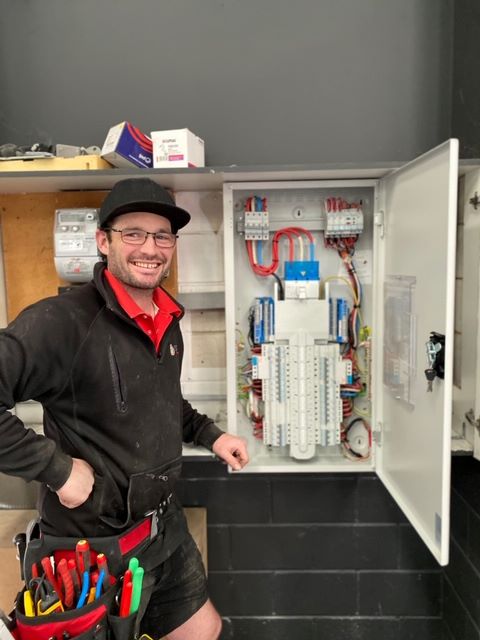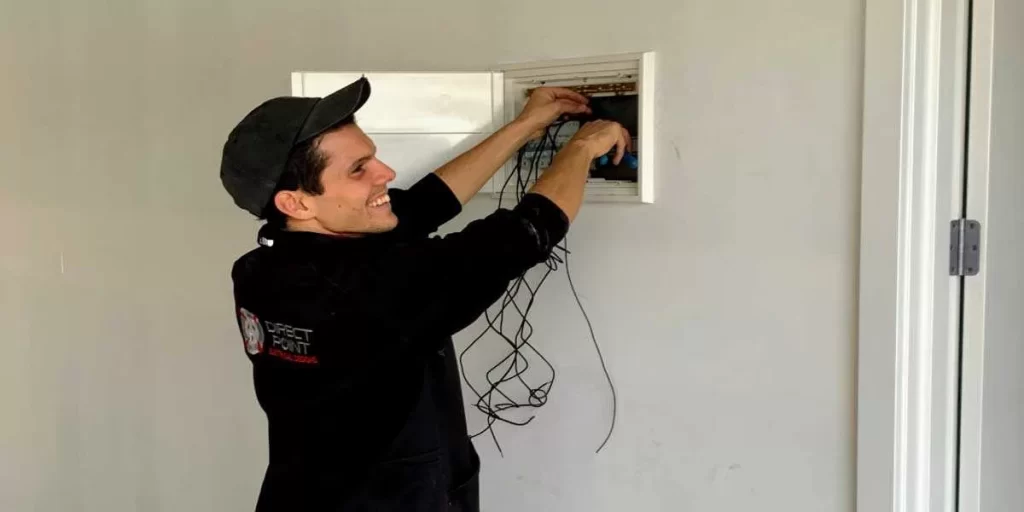When considering electrical installations for residential or commercial properties, one frequent question pertains to whether a main breaker is required for a sub panel. This inquiry often emerges as property owners evaluate options for enhancing their electrical systems or integrating additional circuits to meet increasing power demands. Understanding the role and specifications of sub panels is essential for creating a safe, dependable, and efficient electrical setup that fulfills contemporary needs.
In general, a sub panel does not require a main breaker, as it receives power from the main panel, which is already equipped with a main breaker managing the entire power supply. The breaker in the main panel serves as the primary disconnect for the whole electrical system, including all connected sub panels. However, particular local electrical codes or unique installation situations may necessitate adding a main breaker in sub panels, particularly to enhance safety or operational flexibility. It’s always prudent to check local regulations to ensure adherence and safety.
While not universally mandated, incorporating a main breaker into your sub panel can offer various benefits. It provides a quick and efficient means to cut power to all circuits within that specific panel without impacting the entire electrical system. This capability is especially advantageous during maintenance or emergencies, allowing for the safe isolation of different segments of your property’s electrical setup, thereby improving safety and facilitating access during such scenarios.

Discover the Key Functions and Benefits of Sub Panels for Your Electrical System
Sub panels are crucial components in electrical systems, enabling effective power distribution to specific areas or appliances throughout a property. They significantly enhance the management and organization of circuits while improving the overall capacity to handle electrical loads efficiently. By strategically placing sub panels in optimal locations, property owners can optimize their electrical infrastructure to meet the varying demands of different appliances and equipment, ensuring consistent and reliable operation across the premises.
Exploring Sub Panels: Their Important Role and Advantages in Power Distribution
A sub panel, often referred to as a subsidiary panel or distribution board, serves as an additional electrical panel that branches off from the main electrical panel. Its primary function is to act as a secondary distribution point for electricity throughout a building, providing both flexibility and improved efficiency for the electrical system. Sub panels are typically installed to:
- Increase circuit capacity for a wide array of applications and equipment, accommodating contemporary electrical requirements.
- Isolate power supply to specific areas or devices, ensuring safety and convenience during maintenance or emergency situations.
- Enhance the organization and management of the electrical system, facilitating easier troubleshooting and modifications when needed.
Sub panels are commonly installed in areas such as garages, workshops, or larger homes, especially when the main panel is located far from certain zones that require electricity. Installing sub panels allows property owners to achieve more efficient power distribution, simplifying circuit management and making it more accessible to control their electrical infrastructure as necessary.
Essential Considerations for Electrical Load Assessment Before Installing a Sub Panel
Before commencing a sub panel installation, it is vital to conduct a comprehensive assessment of the electrical load requirements. Key factors to evaluate include:
- The total amperage needed for the designated area or equipment to ensure that an adequate power supply is available.
- The number and types of circuits necessary for specific applications to avoid potential overload situations.
- The distance from the main panel to the chosen sub panel location, ensuring optimal wiring efficiency.
Calculating the expected load is crucial to ensure that the sub panel can handle it safely. Generally, sub panels come in capacities ranging from 60 to 200 amps, depending on their intended use. Matching the sub panel’s capacity to your specific electrical requirements is essential for maintaining both efficiency and safety. Furthermore, considering potential future expansions when sizing your sub panel can save time and costs, preventing the need for upgrades or replacements as your electrical demands change.

Crucial Aspects to Ensure Safe and Effective Sub Panel Installation
To ensure a safe and efficient sub panel installation, several critical factors must be taken into account. These include the proper use of circuit breakers, compliance with regulatory standards, and the implementation of necessary safety precautions. Understanding these installation requirements is essential for creating a safe and compliant electrical system.
Assessing the Necessity of Circuit Breakers in Sub Panels: Key Insights
While it is generally not required for sub panels to have a main breaker, the need for one can vary based on several conditions, such as:
- The distance from the main panel: A local disconnect may be essential if the sub panel is located far from the main panel.
- The number of circuits: Sub panels containing more than six breakers often require a main breaker to enhance safety and prevent overload situations.
- Local codes: Certain regions may mandate the installation of main breakers in all sub panels to adhere to safety standards.
A main lug sub panel depends on the main breaker from the main panel for overcurrent protection, which is a common configuration when the sub panel is situated close to the main electrical panel. Being fully informed about the specific requirements for your installation is critical to ensure safety and compliance throughout your electrical system.
Understanding Regulatory Standards for Sub Panel Installations
In Australia, various electrical standards govern the installation of sub panels, including:
- AS/NZS 3000: This standard outlines the comprehensive requirements for all electrical installations, ensuring safety and dependability.
- Maximum rating: Main breakers for sub panels must not exceed the ampacity of the feeder conductors to ensure safe operation.
- Labelling: Clear identification of the power source for the sub panel is mandatory to enhance safety and management.
Adhering to these standards is vital for ensuring safety and legal compliance. It is highly recommended to consult local authorities for specific regional requirements, and always remember that all electrical work must be conducted by a licensed electrician to guarantee compliance and safety!

Implementing Key Safety Precautions for Sub Panel Installations
Integrating robust safety measures during sub panel installations is critical for reducing electrical hazards and ensuring operational safety:
- Proper grounding: Make sure that the sub panel is effectively grounded to significantly minimize the risk of electrical shocks and enhance overall safety.
- Adequate spacing: Maintain sufficient clearance around the panel to facilitate easy access and ensure proper ventilation for optimal performance.
- Weatherproofing: For outdoor installations, utilize weather-resistant enclosures to protect against moisture and environmental factors that could lead to damage.
Additionally, it’s essential to use the appropriate wire sizes and types tailored to the expected load. Installing arc fault circuit interrupters (AFCIs) and ground fault circuit interrupters (GFCIs) per code requirements is also crucial for enhanced safety. Regular inspections and maintenance of the electrical installation contribute significantly to ongoing safety and compliance. Always hire a licensed electrician for sub panel installations to ensure that all safety standards are strictly followed throughout the process.
Frequently Asked Questions: Demystifying Sub Panels and Main Breakers
The complexities surrounding sub panels, including considerations regarding breakers, sizing, and regulations, can be daunting for property owners. Attaining a clear understanding of the essential requirements is crucial to ensure a safe and compliant electrical setup that meets all local codes and safety standards without confusion.
Is a Main Breaker Mandatory for a Sub Panel?
A sub panel does not inherently require a main breaker. The necessity largely depends on its proximity to the main panel and local electrical codes. If the sub panel is located within the same building as the main panel, a main breaker is typically not needed. However, if the sub panel is situated in a separate structure, it usually must include a main breaker for safety and compliance purposes, ensuring that all electrical installations effectively adhere to local regulations.
Can a Main Breaker Panel Operate as a Sub Panel?
Yes, a main breaker panel can serve as a sub panel, although it may not always represent the most efficient choice. In this case, the main breaker would act as an additional disconnect point rather than the primary disconnect for the entire electrical system. Opting for a panel specifically designed as a sub panel is often more cost-effective and space-efficient, providing better functionality tailored to your unique electrical needs.
What Size Breaker Should Be Used for a 100 Ampere Sub Panel?
For a 100 ampere sub panel, it is standard practice to utilize a 100 ampere breaker in the main panel to supply power to it. This breaker should correspond with the sub panel’s rating to ensure optimal protection and functionality, delivering a reliable power supply that meets your electrical demands. Additionally, the wire size must also be sufficient to handle a 100 ampere load, guaranteeing that the entire electrical system operates safely and effectively without risk of overload.
What Regulations Govern Electrical Sub Panels?
Electrical sub panel regulations can vary by region, but they primarily focus on safety and accessibility. Key regulations usually include:
- Proper grounding and bonding procedures to improve safety and prevent hazards.
- Correct wire sizing to accommodate anticipated loads effectively and safely.
- Adequate spacing around the panel to ensure accessibility and safety for maintenance tasks.
- Clear labelling of all circuits within the panel for better management and identification.
Always consult local codes and consider professional installation to ensure full compliance with all regulations, establishing a safe and reliable electrical environment for your property.
What Is the Capacity Limit for a Sub Panel Connected to a 200 Ampere Main Panel?
A sub panel connected to a 200 ampere main panel does not have a fixed capacity limit. The size of the sub panel depends on several factors, including:
- The available capacity in the main panel to effectively support additional loads.
- The intended load requirements for the sub panel based on its usage and specific applications.
- The wire size used between the panels, ensuring it can handle the load safely without overheating.
It is possible to install a 100 or 150 ampere sub panel, provided the main panel has sufficient spare capacity to accommodate it, thus offering flexibility for future electrical needs and expansions.
How to Accurately Size a Breaker for a New Sub Panel Installation?
To effectively size a breaker for a new sub panel, follow these steps:
- Calculate the total load that the sub panel is expected to support, considering all connected devices and appliances.
- Select a panel rated for that load or higher to ensure safety and reliability during operation.
- Choose a breaker in the main panel that aligns with the sub panel’s rating for optimal performance and protection.
It is wise to consider future expansion needs when sizing the panel. Often, installing a slightly larger panel than currently required can provide additional flexibility for accommodating future electrical demands, making your system more adaptable to changing needs over time.
The Article: Does a Main Breaker Need to Be in a Sub Panel? first appeared on https://writebuff.com
The Article Main Breaker Requirements for Sub Panels Explained Was Found On https://limitsofstrategy.com



